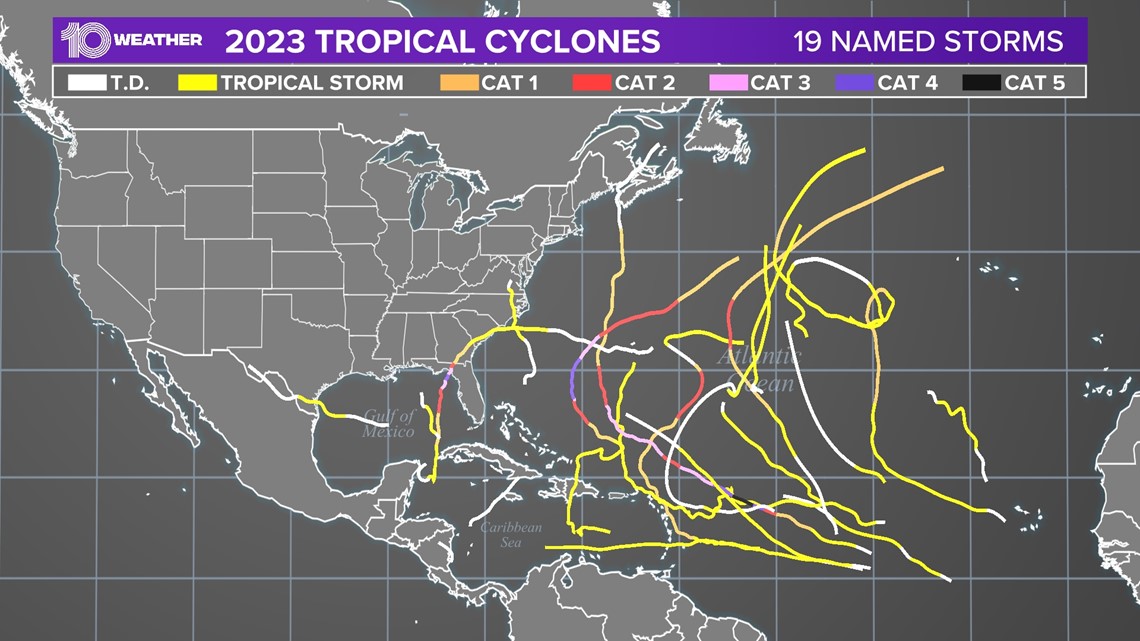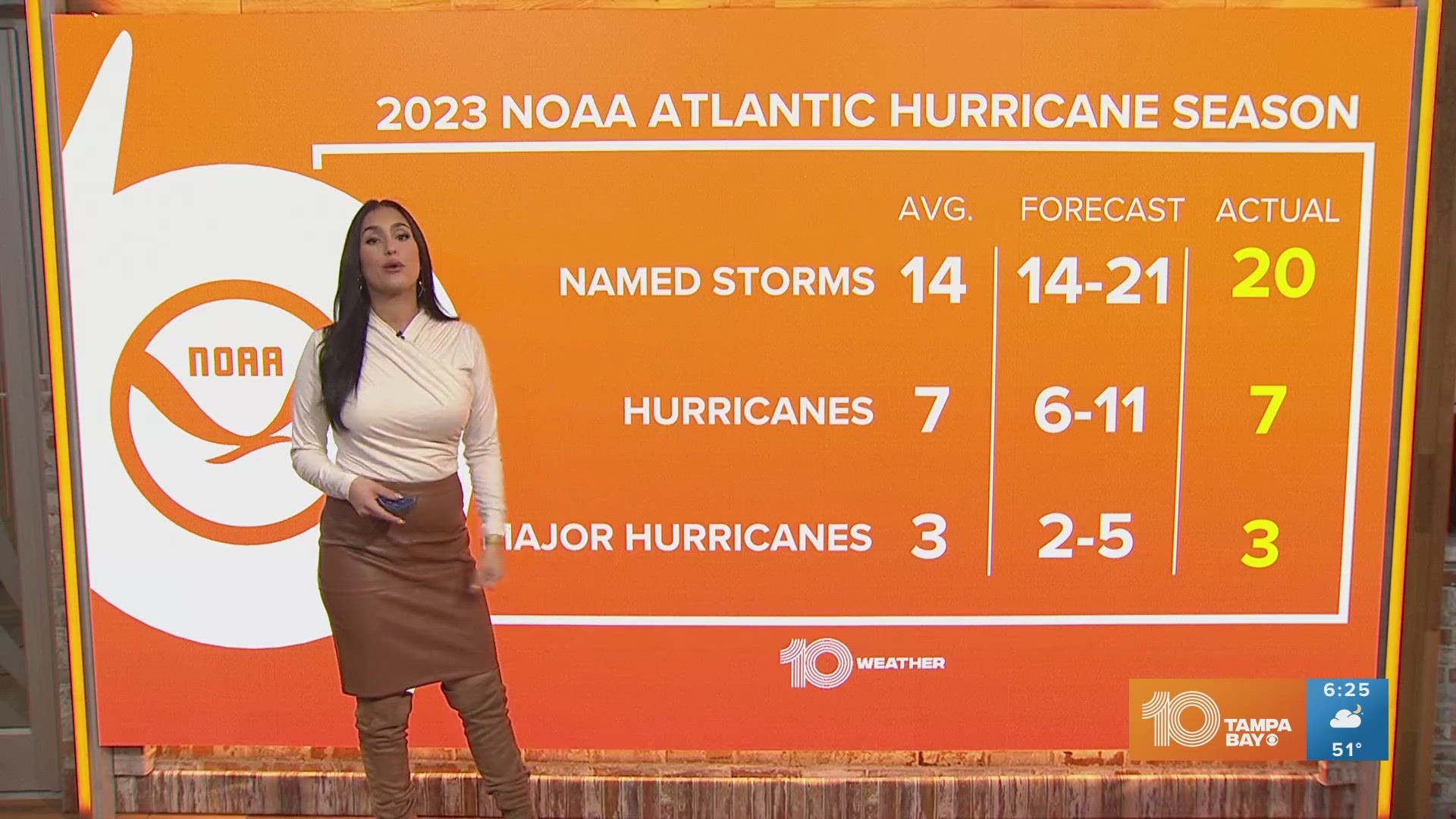ST. PETERSBURG, Fla. — It's finally over — the 2023 Atlantic hurricane season has come to a quiet close. However, despite having less activity near the end of the season, this year's season still managed to make history.
Between near-record warm ocean temps and a strong El Niño, hurricane forecasters were kept on their toes throughout the 182 days of the season. Higher ocean temperatures typically mean a breeding ground for tropical activity; wind sheer and dryer air during El Niño usually hampers tropical development.
In the end, scientists with the National Oceanic and Atmospheric Administration (NOAA) gathered the data and declared 2023 as an above-average hurricane season. The number of storms that got a name — a total of 20 — ranks 2023 4th for most-named storms in a year since 1950. (This includes one subtropical storm that formed in mid-January 2023 but was not named.)
Here's how the numbers shook out for the 2023 Atlantic hurricane season:
- 20 named storms
- 7 hurricanes
- 3 major hurricanes
The 30-year averages are 14 named storms, 7 hurricanes and 3 major hurricanes.
And because of El Niño, this year's hurricane season made the history books for producing the most named storms of any year in modern record that was impacted by the climate pattern.
“The Atlantic basin produced the most named storms of any El Niño-influenced year in the modern record,” said Matthew Rosencrans, lead hurricane forecaster at NOAA’s Climate Prediction Center — a division of NOAA’s National Weather Service. “The record-warm ocean temperatures in the Atlantic provided a strong counterbalance to the traditional El Niño impacts.”
In May, NOAA originally predicted between 12-17 named storms, 5-9 hurricanes and only between 1-4 major hurricanes. Essentially, it was originally looking as though it might be an average season. That quickly changed, for both NOAA and Colorado State, the other major prediction center during hurricane season.


In August, NOAA bumped up those predictions and indicated the season would be above average.
However, hurricane season got a bit of an early start this year — an unnamed subtropical storm formed in the Atlantic basin in mid-January.
Because of this, while the subtropical storm didn't develop in a way for it to get the "A" name on the National Hurricane Center's official name list, NOAA classified this system as the first "named storm" of the season.
After that, the tropics largely behaved until the official start of the season on June 1.
Arlene, the first official name on the list, formed on the first official day of hurricane season as a tropical storm.
The only hurricane to make landfall in the U.S. was Hurricane Idalia. It made landfall on Aug. 30 as a Category 3 hurricane near Keaton Beach, Florida. With storm surge in the area ranging from 7 to 12 feet and widespread rainfall, flooding was recorded throughout Florida and the Southeast.
Tropical Storm Ophelia made landfall as a 70-mph tropical storm on Sept. 23 on Emerald Isle, North Carolina. The only other storm to impact North America and the U.S. with landfall was Hurricane Lee. It made landfall as a post-tropical cyclone on Sept. 16 in Nova Scotia, Canada.
However, Lee caused dangerous surf and rip currents along the entire U.S. Atlantic coast.

